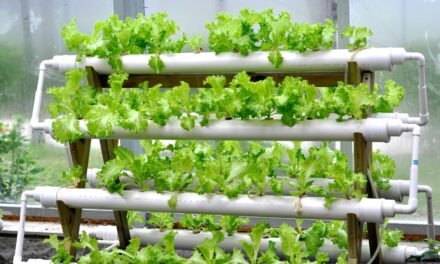INTRODUCTION:
Chemical Oxygen Demand (COD) is a measure of the amount of oxygen required to chemically break down organic matter in water. It’s a crucial parameter for assessing water quality, evaluating wastewater treatment efficiency, and determining the environmental impact of organic pollutants. COD testing helps identify the level of organic pollution, ensuring effective water management and pollution control.
OBJECTIVE:
- Identify the level of organic pollutants in water.
- Evaluating the effectiveness of wastewater treatment processes.
- Water quality monitoring.
REAGENTS:
- Ferrous Ammonium Sulfate (FAS)
- Sulfuric Acid(H2SO4)
- Distilled water
- Potassium dichromate (K2Cr2O7)
- Ferroin Indicator
- Potassium hydrogen phosphate (KHP)
- Mercuric Sulphate (HgSo4)
- Silver Sulphate (AgSo4)
15/04/2025
Preparation of stock:
- 0.1 N FAS (Ferrous Ammonium sulfate)
- 0.25 N K2cr207 (Potassium Dichromate)
- 0.05 N KHP (Potassium Hydrogen Phthalate)
0.1 N FAS:
FAS provides 1 equivalent per mole, so its equivalent weight= 392.14 g/equiv.
For 1 lit (1000 mL) of 0.1 N solution
0.1 N * 392.14 g/equiv = 39.21 g
For 100 mL
39.21/10 = 3.921 g
Procedure:
1)Take 3.92 g of Ferrous Ammonium Sulfate) accurately.
2)In a 100 mL beaker, add 70-80 mL distilled water.
3)Slowly add 2 mL of concentrated H2SO4 to the water.
4)Stir the solution gently.
5)Add the FAS into the acidified water.
6)Stir until fully dissolved.
7)Transfer the solution into a 100 mL volumetric flask.
8)Rinse the beaker with distilled water and that in the flask.
9)Make up the volume to 100 mL with distilled water.
10)Mix thoroughly.

0.25 N K2Cr2O7
We know for 1 lit of 0.25 N K2Cr2O7 we need 12.26 g.
For 100 mL
(12.26/1000)*100= 1.226 g
Procedure:
1)Take 1.226 g of Potassium Dichromate accurately in a 100 mL beaker.
2)Add 70 mL of distilled water into the beaker.
3)Stir the mixture.
4)Transfer the solution into a 100 mL volumetric flask.
5)Rinse the beaker with distilled water and pour the rinsing in volumetric flask.
6)Make up the volume to the 100 mL mark with distilled water.
7)Mix thoroughly.

0.05 N KHP
Molar mass of KHP= 204.22 g/mol
KHP is monoprotic (Monoprotic substances react once per molecule in acid-base reactions).
Therefore, 1 mole = 1 equivalent
so, Normality = Molarity for KHP
For 0.05 N
Required mass = N * Molar Mass * Volume in lit
= 0.05 * 204.22 * 0.1
= 1.021 g
Procedure:
1) Take 1.021 g of KHP.
2) Transfer it to a beaker.
3) Add 70 mL of distilled water and stir to dissolve.
4) Pour the solution into a 100 mL volumetric flask.
5) Rinse the beaker and add rinsing in the flask.
6) Make up the volume to the 100 mL mark with distilled water.
7) Mix well.
18/04/2025
We collected 100 mL of grey water sample from a tank that accumulates wastewater from the girls’ hostel washroom. Following the procedure, we prepared two solutions: one using the grey water sample and another as a blank solution (without the grey water sample). The grey water sample solution will be used for analysis, while the blank solution serves as a control for comparison purposes.

Collecting grey water
Procedure:
- Take o.4 g HgSo4 (Mercuric Sulphate) in COD flask.
- Add 20 mL sample in COD flask.
- Add 20 mL of KHP solution.
- Add 20 mL distilled water.
- Add stones 1 or 2 pieces.
- Add 10 mL K2Cr2O7 ( Potassium Dichromate) solution.
- Add 30 mL concentrated sulfuric Acid slowly in the COD flask.
- If the solution turns green add more known quantity of K2Cr2O7 solution.
- Kept COD flask in COD apparatus to digest the sample.
- Attach condenser & set 150 degree Celsius temperature.
- Keep the flask with condenser in apparatus for 2 hours on 150 degree Celsius temperature.
- After 2 hours turn off the digester and remove COD flask and let it cool on room temperature.
- Take the sample from flask into conical flask.
- Add 150 mL distilled water.
- Titrate the solution with FAS solution with 3-4 drops of Ferron indicator.
- Titrate it till the sample turns blue green to reddish brown.

Result:
The COD (Chemical Oxygen Demand) digester initially reached the required temperature of 150 degrees Celsius. However, after 20 minutes, the temperature began to drop, preventing the sample from maintaining a consistent boil as needed for the reaction. Consequently, during the titration process, the solution failed to exhibit the expected color change, indicating that the digestion process may not have been completed effectively due to the temperature fluctuation.
26/04/2025
We conducted a COD (Chemical Oxygen Demand) test using tap water and a blank solution to troubleshoot the issue of unstable temperature. By running this control test, we aimed to determine if the temperature stability problem was specific to the sample or a more systemic issue with the testing procedure.

The results of our experiment/test did not meet our expectations. Despite our efforts, the outcome wasn’t what we had hoped for, and we may need to re-examine our approach or troubleshoot further to achieve the desired results.

We couldn’t fix the problem with the COD testing equipment. Abhijeet sir told me to talk to Tejaswini, who ordered the apparatus, and ask her to contact the company about the issue. This way, we might get help from the company to fix the problem.
27/04/2025
Tejaswini helped troubleshoot the issue, and we discovered that setting a timer for 2 hours at 150 degrees Celsius would stabilize the temperature. This adjustment should resolve the problem and allow us to achieve consistent results.
I carefully prepared the required stock solutions for the testing process, following the procedure mentioned earlier.
28/04/2025
I repeated the procedure to determine the stock solution for the KHP sample and a blank sample. However, despite following the same steps as mentioned earlier, the results didn’t meet our expectations. Upon further investigation, I discovered that the procedure we were using was incorrect. Now, I’ll have to switch to a new procedure, which will hopefully yield more accurate results.

29/04/2025
After conducting a thorough review of various videos and literature, I identified a suitable procedure for determining Chemical Oxygen Demand (COD). The procedure I’ve selected appears to be appropriate for our specific needs and will guide the experimentation process.:
- Add 20 mL water sample in COD flask( for blank sample add distilled water)
- Add 10 mL of 0.25 N K2Cr2O7 solution.
- Add 0.4 gm of Silver sulphate.
- Add 30 mL H2SO4.
- Put the flask in digester and attach condenser which has been set on 150 degree Celsius for 2 hours.
- After 2 hours .Let it cool.
- Add 150 ml distilled water through condenser.
- Add 3 – 4 drops of Ferroin Indicator.
- Titrate the sample with 0.1 N FAS solution.
02/04/2025
We followed the same procedure outlined earlier to conduct a Chemical Oxygen Demand (COD) test on Potassium Hydrogen Phthalate (KHP). This test serves as a quality control measure to verify the accuracy of our procedure. Since KHP is a standard substance with a known COD value, we expect the results to be close to 500 mg/L, which is the theoretical COD value for KHP. By comparing our test results to this standard value, we can determine if our procedure is correct and reliable.

Color change observed during Titration:





Calculation:
COD= (A-B)*N*8000/Volume of sample
Where,
A= Reading of blank sample
B= Reading of KHP sample
N= Normality of FAS solution
COD= (25.3 – 12.5)*0.1*8000/20
Result:
| Sample | Reading | COD |
| Blank | 25.3 | – |
| KHP | 12.5 | 512 |
The results of our test matched the standard values, indicating that our procedure is accurate and reliable. With satisfactory results, we can confidently conclude that our method is correct. This validation gives us the assurance needed to proceed with determining the Chemical Oxygen Demand (COD) of black water, which is the next step in our analysis.
03/04/2025
We collected samples of black water from the campus, which will be used for further analysis. Following the previously validated procedure, we conducted a Chemical Oxygen Demand (COD) test on these water samples.

Results:
| Sample | Reading | COD |
| Blank | 25.6 | – |
| Dixit sir home | 24 | 64 |
| Boys hostel | 21.2 | 176 |
| Girls hostel | 22.3 | 132 |
01/06/2025
I taught Jyotsna how to prepare stock solutions for COD determination and guided her through the procedure, including digestion, titration, and calculation of COD values using ferroin indicator and FAS titrant.
02/06/2025
| Sample | Reading | COD |
| Blank | 25.6 | – |
| Dixit sir Home | 18.2 | 296 |
| Boys Hostel | 17.6 | 320 |
| Girls Hostel | 19.1 | 260 |





